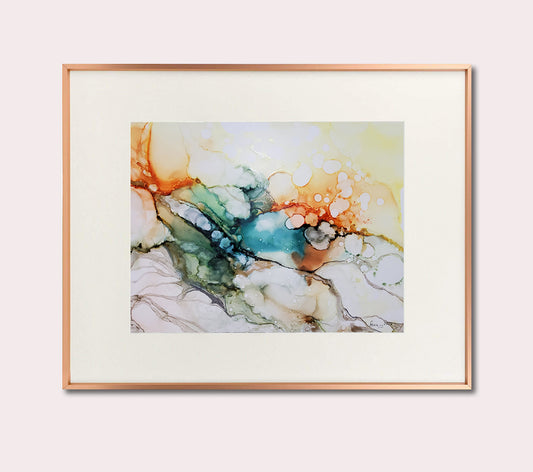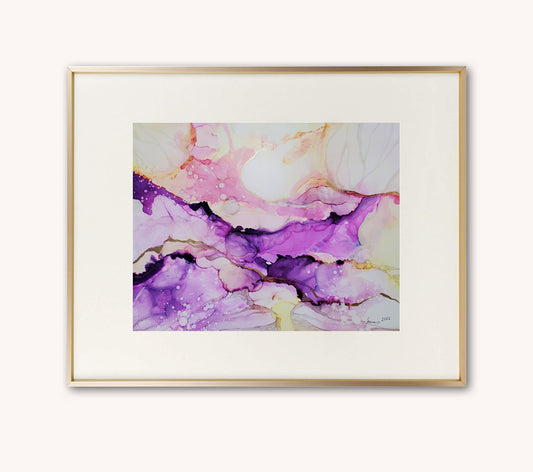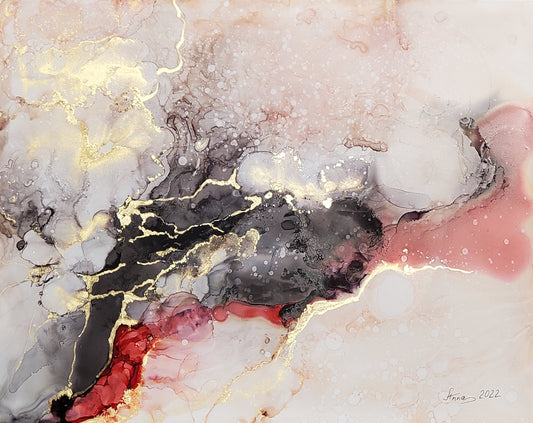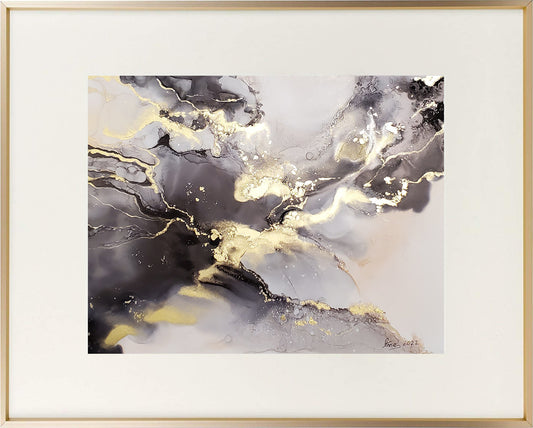
Abstract art is a realm of artistic expression that has both captivated and confounded art enthusiasts for over a century. Its esoteric nature often leads to the question: Does abstract art carry a message? On the surface, abstract art appears to be a chaotic interplay of colors, shapes, and forms that defy representation of reality. However, beneath this seemingly haphazard composition, abstract art holds a fascinating and intricate language, one that conveys a message in ways more profound than traditional representational art. In this exploration, we will decipher the cryptic language of abstract art, revealing its hidden messages through a journey that spans the works of renowned artists, the evolution of abstraction, and the myriad techniques that define this enigmatic genre.
The Birth of Abstraction: Historical Context
To understand the hidden language of abstract art, we must first delve into its historical origins. The birth of abstraction can be traced back to the late 19th and early 20th centuries, a period marked by significant societal, technological, and artistic transformations. The transition from the 19th-century academic tradition, characterized by realism and romanticism, to the abstraction of the 20th century was driven by several key factors.
One of the most notable catalysts was the advent of photography. With photography's emergence as a medium for capturing reality with unprecedented accuracy, the role of representational art began to shift. Artists were no longer bound by the responsibility to faithfully depict reality, leading to a search for new means of artistic expression.
Simultaneously, there were profound changes in society and culture. The early 20th century witnessed rapid urbanization, industrialization, and the turmoil of two World Wars. These upheavals generated a sense of disillusionment and fragmentation, which found reflection in the emerging style of abstract art. Artists sought to represent the chaotic, fragmented, and, at times, absurd nature of modern existence through abstraction.
The Language of Form and Color
One of the most fundamental aspects of abstract art is the use of form and color to communicate meaning. Abstract artists utilize a wide range of shapes, lines, and colors to create compositions that evoke emotion, provoke thought, and convey a message. Consider the works of Piet Mondrian, a pioneer of abstract art.

Mondrian's "Composition with Red, Blue, and Yellow" is a prime example of how abstraction can convey a message through form and color. In this iconic work, Mondrian reduces the elements to their most basic forms: rectangles and primary colors. The straight lines and right angles create a sense of order and balance, while the bold colors evoke distinct emotions. The red signifies passion and vitality, the blue tranquility and spirituality, and the yellow suggests energy and optimism. These simple elements come together to form a message of harmony and equilibrium, encapsulating Mondrian's philosophical ideals of neoplasticism.
Moreover, form and color in abstract art can be used to communicate a wide range of emotions and concepts. For instance, Wassily Kandinsky, another influential abstract artist, believed that color and form had inherent symbolic qualities. His painting "Yellow-Red-Blue" is a vivid example of how abstraction can convey emotions. The fiery red, sunny yellow, and serene blue are not just random choices but are used deliberately to evoke specific feelings in the viewer. In this case, the color red symbolizes warmth and vitality, yellow represents joy and optimism, and blue conveys calm and serenity. Kandinsky's abstract language communicates a message of inner spiritual harmony and the artist's desire to move beyond the material world.

Gestural Abstraction: The Language of Movement
The language of abstract art is not confined to the canvas's static elements. Another intriguing aspect of abstraction is the use of movement and gesture to convey meaning. This approach is vividly exemplified in the works of abstract expressionists like Jackson Pollock.
Pollock's "Autumn Rhythm" is a masterpiece of gestural abstraction. The entire canvas appears to be in motion, as if it were a record of the artist's dance around the canvas. The swirling lines, splatters, and drips of paint create a sense of dynamism and chaos. The message here is one of raw, unbridled emotion and energy. The viewer can almost feel the artist's presence and experience his inner turmoil. The language of movement in gestural abstraction goes beyond representation; it immerses the viewer in the artist's creative process and emotional state.

A similar approach to the language of movement can be found in the works of Franz Kline. In his painting "Mahoning," the bold, sweeping black strokes create a sense of energy and urgency. The deliberate, gestural marks on the canvas convey a message of intensity and spontaneity. The viewer is drawn into the world of the artist's action, capturing a moment of artistic creation that transcends traditional representation.
The Sublime and the Spiritual: Abstract Art's Philosophical Language
Abstract art often delves into the realm of the sublime and the spiritual, employing a unique philosophical language to convey deeper meanings. Mark Rothko, renowned for his large, color-field paintings, is a prime example of an artist who used abstraction to explore the spiritual.
In Rothko's "No. 61 (Rust and Blue)," the canvas is dominated by two expansive, soft-edged rectangular forms, one in rust and the other in blue. The large scale and the simplicity of the composition create an immersive experience. Rothko intended his work to be not just seen but felt. He believed that his art had the power to evoke an emotional and spiritual response in the viewer. The hidden message in Rothko's work is an invitation to contemplation, to experience the sublime, and to connect with something greater than the everyday world. It is a language that speaks to the soul and encourages introspection.

Similarly, the work of Agnes Martin, known for her minimalist approach, uses abstraction to convey a message of serenity and transcendence. In her painting "Wheat," the subtle grid of lines on a pale background creates a sense of quiet and order. Martin's philosophy of art as an expression of universal harmony is evident in her work. The hidden message in her art is an invitation to embrace simplicity and find beauty in the quiet contemplation of the world.

Abstraction in Context: The Hidden Messages of Social Commentary
Abstract art is not limited to the personal and spiritual. It also has a rich history of conveying social and political messages. Artists have used abstraction to critique societal norms, express dissent, or shed light on pressing issues of their time.
During the mid-20th century, in the wake of World War II and in response to the global turmoil, abstract artists like Ad Reinhardt engaged in what can be termed as "political abstraction." Reinhardt's "Abstract Painting, Blue" is a stark and minimalistic work that appears, at first glance, to be a monochromatic canvas. However, upon closer examination, subtle variations in the shades of blue become apparent. This is not just a matter of aesthetics; it carries a hidden message. Reinhardt used abstraction to criticize the homogeneity and conformity he observed in society. The slight variations in the monochrome surface represent the artist's critique of a world where individuality and diversity were being subsumed into a monotonous and conformist whole.

In the 1960s, the civil rights movement in the United States had a profound impact on artists, including Frank Stella. Stella's "Die Fahne Hoch!" is a dynamic and powerful example of abstract art as a vehicle for social commentary. The work's title, which translates to "The Raised Banner," is a reference to a Nazi anthem. Stella, however, utilized the title ironically, as a commentary on the resurgence of far-right ideologies in the post-war world. The hidden message in the work is a warning against the dangers of political extremism and a call to remain vigilant against the reemergence of hate and discrimination.
The Role of the Viewer: Interpretation and Subjectivity
The hidden language of abstract art relies heavily on the viewer's interpretation and subjectivity. Unlike representational art, which often presents a clear narrative, abstract art encourages individual engagement and interpretation. This subjectivity allows each viewer to find their own message within the artwork.
For instance, consider the works of the Russian artist Kazimir Malevich. Malevich's "Black Square" is one of the most iconic pieces of abstract art. It is a simple black square on a white canvas. At first glance, it may appear as if there is no message at all. However, Malevich saw this work as a manifestation of the spiritual and the infinite. He believed that the black square represented the void, a portal to the unknown and the transcendental. The hidden message in "Black Square" can be as vast and varied as the interpretations of its viewers. Some may see it as a symbol of the unknown, while others may find it to be a meditation on nothingness.

Similarly, in the work of Yves Klein, an artist known for his monochromatic blue canvases, the hidden message can vary from viewer to viewer. Klein's use of a single color in his paintings is intended to evoke a sense of the infinite and the boundless. For some, the blue may symbolize the sky or the sea, representing freedom and the vastness of the universe. For others, it may invoke a sense of tranquility and calm. The hidden language in Klein's work relies on the viewer's emotional and personal response, making each encounter with the artwork a unique and individual experience.

The Influence of Abstract Art in Contemporary Culture
The language of abstract art continues to influence contemporary culture, and its hidden messages resonate with artists and viewers alike. Contemporary artists often draw upon the rich tradition of abstraction to communicate their ideas and emotions.
One such artist is Gerhard Richter, whose work "Cage" pays homage to the renowned composer John Cage. In this abstract piece, Richter employs a series of colorful squares that are seemingly randomly arranged. The work is a reflection of Cage's belief in chance and randomness in art and music. The hidden message here is an exploration of the interplay between intention and randomness, a commentary on the role of chaos and unpredictability in the creative process.
Contemporary abstract artist Julie Mehretu engages with the complexities of the modern world in her work "Stadia II." Her large-scale, multilayered compositions resemble architectural blueprints or maps of urban landscapes. The layers of lines and shapes intersect and overlap, creating a sense of complexity and dynamism. The hidden message in Mehretu's work is an exploration of the urban experience, the layers of history, migration, and the interconnectivity of human lives in a rapidly changing world. Her art becomes a canvas for the exploration of contemporary social and spatial dynamics.
Conclusion: The Multifaceted Language of Abstract Art
Abstract art is a multifaceted language that can convey messages in diverse ways. Whether through the use of form and color to evoke emotions, the language of movement and gesture, philosophical exploration of the spiritual, social commentary, or the role of the viewer's interpretation, abstract art offers a rich tapestry of hidden messages waiting to be deciphered.
It is this very diversity and complexity that make abstract art an enduring and captivating genre. The messages it carries are not fixed or dogmatic; they invite viewers to engage, interpret, and discover their own meanings. Abstract art challenges us to look beyond the surface, to see the world in new and unexpected ways, and to connect with the deepest recesses of human emotion and thought.
In the words of Wassily Kandinsky, "Of all the arts, abstract painting is the most difficult. It demands that you know how to draw well, that you have a heightened sensitivity for composition and for colors, and that you be a true poet. This last is essential." Abstract art's hidden language is a poetic one, a language of emotion, thought, and meaning, waiting to be unraveled by those who dare to explore its depths.
Intrigued by the fascinating world of abstract art? Your artistic journey doesn't have to end here. Explore a mesmerizing collection of captivating and modern abstract artworks by visiting our Abstract Art Collection and Shop. Our gallery is a treasure trove of creativity, where you can not only see but also acquire unique pieces that resonate with your aesthetic sensibilities. Dive into a realm of imagination, emotion, and innovation as you discover the transformative power of abstract art. Don't miss the opportunity to enrich your surroundings with these thought-provoking creations. Start your exploration now and let the art on this page inspire your soul.











